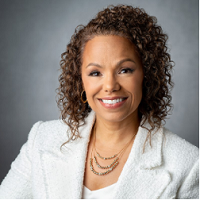
December has always been one of my favorite months. For many years, my late mother and I would travel to New York City each year to see the Rockefeller Center Christmas tree, shop and see a show on Broadway. For me, December represents family, cold nights and heartwarming stews. Yes, I absolutely enjoy the holiday season and all that it entails, but I also enjoy the reflection it inevitably forces upon us all and the anticipation of a brand-new year — a fresh start.
Notwithstanding, it is not lost on me that many individuals experience higher rates of loneliness and social isolation at this time of the year. Certainly, the pandemic has exacerbated this predicament, but social isolation has existed long before the pandemic. The National Academies of Sciences, Engineering, and Medicine (NASEM) points out that more than one-third of adults aged 45 and older feel lonely, and nearly one-fourth of adults aged 65 and older are considered to be socially isolated. While we continue to learn and quantify the impact of social isolation and loneliness, the NASEM research findings strongly suggest that social isolation significantly increases a person’s risk of premature death from all causes and increases the risk of dementia, heart disease and stroke.
And while we may be quick to assume that only older adults are more vulnerable, the NASEM found that immigrants, LGBTQ populations, minorities and victims of elder abuse are also at an increased level of vulnerability.
So now what? Now that we are aware, what can we do collectively to give these human beings the opportunity to be healthy and thrive? What can we do individually? There is certainly third-party data available to identify those at elevated risk of social isolation. In addition, because many adults over 50 interact with the healthcare system regularly, it affords the unique opportunity to intervene in meaningful ways.
If we consider for a moment that a physician visit may be the only social interaction for an extended period for some people, we would be wise to screen for loneliness or social isolation, educate them on the risks and/or refer folks to social resources. Individually, we can reach out to those we know to be in high-risk cohorts, understand what resources may be available in our own community and/or even show courage in self-identifying that you yourself may be at risk.
Still inspired by all that we heard at the recent HFMA Annual Conference in Minneapolis, I offer you encouragement for there is much each of us can do to promote health equity. So continue to be Bold, forging a Brighter path forward for a Better tomorrow.
I wish each one of you peace, good health and restoration this holiday season. Cheers!





